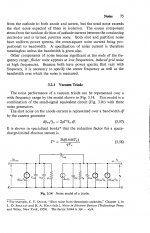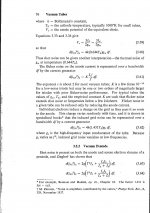What makes you so sure that solid state (transistors, ICs etc.) is not microphonic? It is and you, and all other as well, know it - but now one is talking about the subject. And tubes have better thermionic properties!
Yes they are. But then you can knock the transistor cases with a sledge hammer and won't be able to hear a thing. Can you imagine what 46MPa (about 460atm, or about 3 miles under water) looks like and what kind of amp you need to generate that kind of sound pressure?
Hi end manufacturers that I work with, or compete with, often use really good bypass caps that we found were superior in this regard, about 30 years ago. Although cap values tend to vary a little, usually we use something like a 0.1uF polystyrene or polypropylene from our favorite manufacturer. I won't do it any other way.
Charles Hansen regarded one cap manufacturer so valuable that he even offered to buy the cap company to secure continued production. He and I use the same brand, by the way.
Charles Hansen regarded one cap manufacturer so valuable that he even offered to buy the cap company to secure continued production. He and I use the same brand, by the way.
Hi end manufacturers that I work with, or compete with, often use really good bypass caps that we found were superior in this regard, about 30 years ago.
That would be part of the legend, good for the price-no-objection market.
The space shuttle used tantalum caps for decoupling and other purposes. Most likely, the space shuttle is subject to much more vibrations compared to an audio amp, Ayre, Parasound or even a Blowtorch.
Distortion is what makes tubes sound pleasing.
Yes, but it is not what makes them sound GOOD.
Yes, but it is not what makes them sound GOOD.
You mean it can sound bad but pleasing? You really DO have a way with words
jan
I believe that low static & dynamic noise is a big factor of why tube amps have pleasant sound and a little bit of 2nd HD doesn't do any harm
Interesting. Usually tube amps have very poor SNR, yet you say so. Mind to elaborate?
Little bit is <0,1% in my book btw (very easily achievable with a push-pull config).
SS amps may "sound" more dynamic but it's easy to add a false sence of dynamics to a SS amp merely by adding some PSU noise into the mix. For me this is not High Fidelity - but I have noticed that some people seem to like it.
Or a bit more third harmonic (esp. wrt the 2nd) and voilà!
You mean it can sound bad but pleasing? You really DO have a way with words
jan
Definitely. A lot of "snake oil" is like this.
And thanks, I should get back to writing (albeit not directly in English, since my vocabulary is not extensive enough).
And thanks, I should get back to writing (albeit not directly in English, since my vocabulary is not extensive enough).
You do pretty good, you know very well how to communicate what you mean.
Me, I'm just a publisher
jan
Yes, but it is not what makes them sound GOOD.
Tell us what it is, pls.
The Ocean and Switching
My old rule of thumb was to never buy any electronic equipment that has lived close to salt air. You can even see the erosion on the wafers. So, you would want airtight casing on any rotary switch (Elma or other) that would live in such an environment.
Have you compared the Shallco with Elma switches? Would be interesting to read your comments. I had problems with the Elma switches producing spatter (long term use) when they are used in sea area.
My old rule of thumb was to never buy any electronic equipment that has lived close to salt air. You can even see the erosion on the wafers. So, you would want airtight casing on any rotary switch (Elma or other) that would live in such an environment.
Interesting. Usually tube amps have very poor SNR, yet you say so. Mind to elaborate?
ahh interesting, do you happen to know the nature of that noise ?
I would be very interested to know from where this noise comes and the frequency of it.
If it is purely 50 or 100hz ( 60 or 120 in the USA ) I would not expect it to have a negative impact on the sound of the amp.
Logic dictates that some kinds of noise are benign otherwise how could vinyl ever be so adored as a recording medium.
So perhaps it's not the quantity of the noise but the nature of the noise we have to consider.
mike
I believe Telstar is referring to random noise (i.e. not "hum"), which in a properly-designed tube power amp should be dominated by the first stage and will depend on details of the tube used there, but which for triodes with typical-temperature cathodes can be approximated at mid-high frequencies by an equivalent noise resistance proportional to the reciprocal of the transconductance --- see Cherry and Hooper* for details. At low frequencies the excess "flicker" noise will rise significantly over the midband noise, usually with a 1/f^n dependence where n is about 1. And it just keeps going as you go down in frequency. Fortunately the ear's acuity falloff is our friend here.ahh interesting, do you happen to know the nature of that noise ?
I would be very interested to know from where this noise comes and the frequency of it.
If it is purely 50 or 100hz ( 60 or 120 in the USA ) I would not expect it to have a negative impact on the sound of the amp.
Logic dictates that some kinds of noise are benign otherwise how could vinyl ever be so adored as a recording medium.
So perhaps it's not the quantity of the noise but the nature of the noise we have to consider.
mike
Some have conjectured that tube noise seems somehow to interact less with the signal and somehow allows the ear/brain to differentiate and find the noise less objectionable (phrases like "it floats above..."). I'm not aware of any studies done to affirm or deny this.
*Amplifying Devices and Low-Pass Amplifier Design" Wiley, 1968
Tell us what it is, pls.
I wish I knew.
My suspect about transfer speed has been debunked (although the cited 1ns is faster than any SS amp with GNFB).
ahh interesting, do you happen to know the nature of that noise ?
I would be very interested to know from where this noise comes and the frequency of it.
If it is purely 50 or 100hz ( 60 or 120 in the USA ) I would not expect it to have a negative impact on the sound of the amp.
I have no idea, as I have never studied vacuum tubes, sorry (and not sure if I would have understood this phenomena even if i did).
So I guess that you referred to thermal noise, that should indeed be lower in vacuum tubes.
Logic dictates that some kinds of noise are benign otherwise how could vinyl ever be so adored as a recording medium.
Vinyl sounds good, despite the noise/hum/chachacha.
But you made me think about noise shaping algorithms... a paper posted on ESS website is quite interesting.
So perhaps it's not the quantity of the noise but the nature of the noise we have to consider.
Yeah, let's add this to the already recognized fact that the nature of the distortion is to be considered and things gets exponentially harder to explain. headache-level harder
That figure is just the transit time from cathode to plate, not an entire amplifier. Remember, 25cm or so of wire is a nanosecond...
Oh thanks, do you have some typical figures of a standard PP tube amp and a SS one for comparison, considering or not considering global feedback for simplicity.
Vacuum tube noise midband in triodes is primarily a shot noise phenomenon modified by a space charge smoothing effect. However, the cathode temperature enters into it as it pertains to the way the transconductance is determined. There's a similar situation in bipolars, where the expression for transconductance involves temperature as well, so that when the expression for one component of the noise resistance is shown, that due to the equivalent emitter resistance at a given collector current, it looks like a sort of thermal noise.
At risk of copyright violence I'll scan the brief discussion in Cherry and Hooper, since that book is difficult to obtain.
At risk of copyright violence I'll scan the brief discussion in Cherry and Hooper, since that book is difficult to obtain.
- Status
- Not open for further replies.
- Home
- Member Areas
- The Lounge
- John Curl's Blowtorch preamplifier part II

